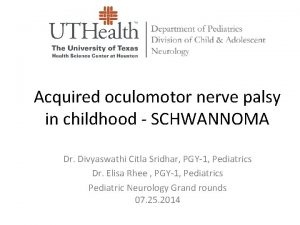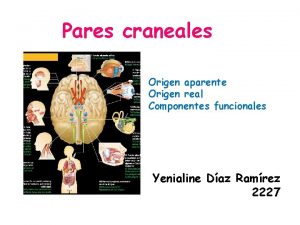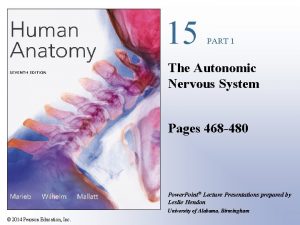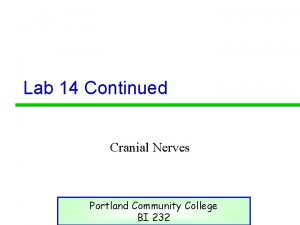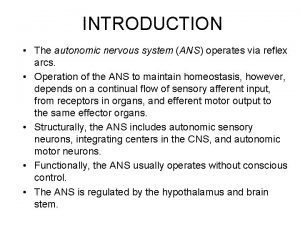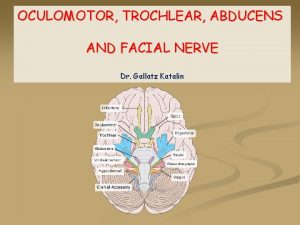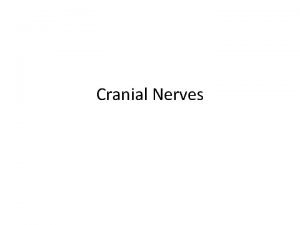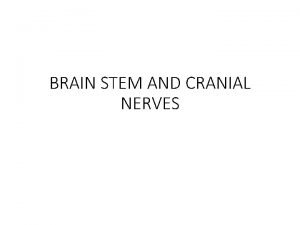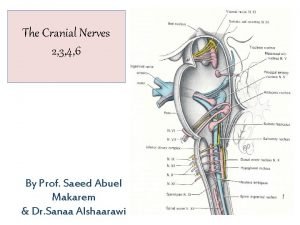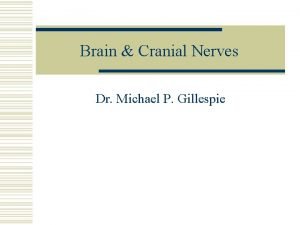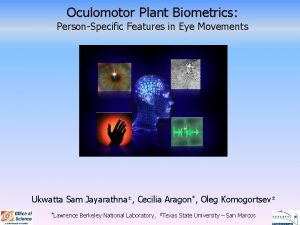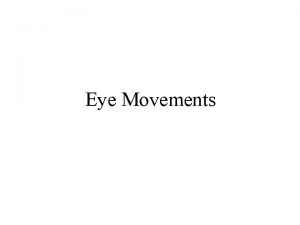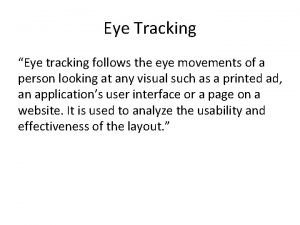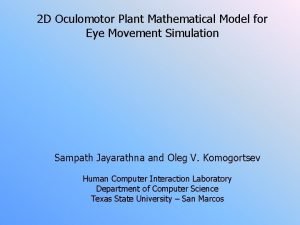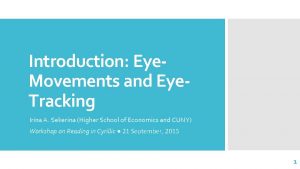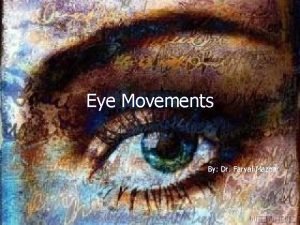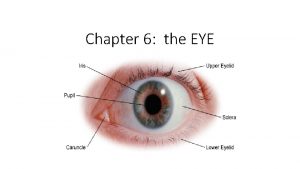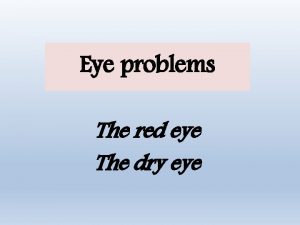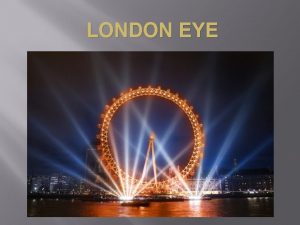Microsaccadic Fixational Eye Movements as an Oculomotor Marker












- Slides: 12

Microsaccadic Fixational Eye Movements as an Oculomotor Marker for Concussion Mo Mortazavi MD, Ryan ‘Pete’ Manely DHSc, Prem Kumar Thirunagari, David Tramutolo BS, Nasser Kouchecki, Harris Ahmed MPH, Tanya Polec OD, Jon Minor MD, Hector Rieiro Ph. D

Background ● Eye movements fundamental for visual function and perception ● Normal visual exploration can be divided in ● - Fixations: periods of relative stability - Saccades: fast movements that take the eyes from one region of interest to another Eyes are never still - ● Even when trying to keep gaze stable, fixational eye movements (microsaccades, drift, tremor, etc) are generated as a normal part of visual function Physiologic role in peripheral awareness and integration

Purpose · Microsaccades: microscopic (0. 5 -1. 5 degrees), fast eye movements that generate an immediate shift on gaze during attempted fixation.

Purpose ● Can fixational eye movements be used as concussion biomarker? - Known marker for: fatigue, cognitive load, neurological diseases (Parkinson’s and others) - Measurement is quick and non-invasive - Results are easily quantifiable

Methods ● ● Healthy control data: 116 college athletes from Sterling College (Sterling, KS), without history of concussion Concussion data: 86 patients who has an initial visit for concussion at Concussion Center (Tucson, AZ) ● All participants between 18 and 23 years of age ● Equipment: - SMI ET-HMD eye tracker, working at 250 Hz, installed in a HTC Vive virtual reality headset - Stimulus control and data acquisition performed using Saccadous software

Methods ● ● ● Subjects look at central white dot over a black background for 140 seconds (20 sec intervals) Variables measured (five total): - Number of microsaccades - Size and speed of microsaccades - Visual area covered by the eyes during the fixation period (all fixational eye movements): ● Total area ● Vertical-to-horizontal ratio Statistical analysis: logistic regression - Independent variables: log-transformed oculomotor characteristics - Dependent variable: concussion yes/no

Results Logistic regression analyses results Fixational eye movements provide a highly specific marker for concussion

Results Heavier distribution tails on concussed population >1. 5 -2 deg 75 -85% threshold for PCS

Results Vertical/horizontal>2 threshold for ~85% concussed Normal range >1. 5 deg threshold for ~70% concussed

Limitations ● Fixational eye movements are only part of possible oculomotor metrics ● Retrospective review ● Lack of control for severity of injury or medical history ● Data acquired at different locations by different personnel

Conclusions · · Concussion patients present abnormal fixational eye movements · Larger microsaccades (>1. 5 deg => ~70% concussed) · Larger vertical component of motion (>2/1 ratio of vertical/horizontal ratio => ~85% concussed) Fixational eye movements are a potential, non-intrusive marker for concussion · May be marker for concussion cognitive fatigue and/or visual subtype · Future studies · Statistical model refinement · Addition of non-fixational eye movement metrics: pursuit, convergence, etc

References 1. Alexander RG etal. Microsaccade Characteristics in Neurological and Ophthalmic Disease, State University of New York (SUNY) Downstate Medical Center. Frontiers in Neurology 2018. 2. Martinez-Conde etal. Microsaccades: a neurophysiologicalanalysis. Barrow Neurological Institute, Phoenix, AZ, USA. Cell 2008. 3. Otero-Millan etal. Saccades and microsaccades during visual fixation, exploration, and search: Foundations for a common saccadic generator. Barrow Neurological Institute, Phoenix, AZ. Journal of vision 2008. 4. Kontos AP, Deitrick JM, Collins MW, Mucha A. Review of Vestibular and Oculomotor Screening and Concussion Rehabilitation. J Athl Train. 2017. 5. Gunasekaran P, Hodge C, Rose K, Fraser CL. Persistent visual disturbances after concussion. Aust J Gen Pract. 2019. 6. N. Kapoor, K. J. Ciuffreda etal. Vision disturbances following traumatic brain injury. Current Treatment Options in Neurology 2002. 7. Ciuffreda KJ, Rutner D, Kapoor N, Suchoff IB, Craig S, Han ME. Vision therapy for oculomotor dysfunctions in acquired brain injury: a retrospective analysis. Optometry. 2008. 8. Thiagarajan P, Ciuffreda KJ, Capo-Aponte JE, Ludlam DP, Kapoor N. Oculomotor neurorehabilitation for reading in mild traumatic brain injury (m. TBI): an integrative approach. Neuro. Rehabilitation. 2014.

